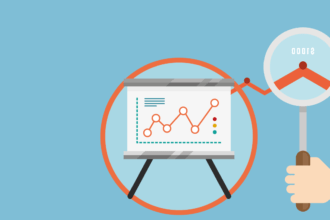Well, the danger is really not the statistical test per se, it the interpretation of the statistical test.
Yesterday I tweeted (@deanabb) this fun factoid: “Redskins predict Romney wins POTUS #overfit. if Redskins lose home game before election => challenger wins (17/18) http://www.usatoday.com/story/gameon/2012/11/04/nfl-redskins-rule-romney/1681023/” I frankly had never heard of this “rule” before and found it quite striking. It even has its own Wikipedia page (http://en.wikipedia.org/wiki/Redskins_Rule).
Well, the danger is really not the statistical test per se, it the interpretation of the statistical test.
Yesterday I tweeted (@deanabb) this fun factoid: “Redskins predict Romney wins POTUS #overfit. if Redskins lose home game before election => challenger wins (17/18) http://www.usatoday.com/story/gameon/2012/11/04/nfl-redskins-rule-romney/1681023/” I frankly had never heard of this “rule” before and found it quite striking. It even has its own Wikipedia page (http://en.wikipedia.org/wiki/Redskins_Rule).
For those of us in the predictive analytics or data mining community, and those of us who use statistical tests to help out interpreting small data, 17/18 we know is a hugely significant finding. This can frequently be good: statistical tests will help us gain intuition about value of relationships in data even when they aren’t obvious.
In this case, an appropriate test is a chi-square test based on the two binary variables (1) did the Redskins win on the Sunday before the general election (call it the input or predictor variable) vs. (2) did the incumbent political party win the general election for President of the United States (POTUS).
According to the Redskins Rule, the answer is “yes” in 17 of 18 cases since 1940. Could this be by chance? If we apply the chi-square test to it, it sure does look significant! (chi-square = 14.4, p < 0.001). I like the decision tree representation of this that shows how significant it is (built using the Interactive CHAID tree in IBM Modeler on Redskin Rule data I put together here):
It’s great data–9 Redskin wins, 9 Redskin losses, great chi-square statistic!
OK, so it’s obvious that this is just another spurious correlation in the spirit of all of those fun examples in history, such as the superbowl winning conference predicting if the stock market would go up or down in the next year at a stunning 20 or 22 correct. It even was the subject of academic papers on the subject!
The broader question (and concern) for predictive modelers is this: how do we recognize when we have uncovered spurious correlations in the data that are merely spurious? This can happen especially when we don’t have deep domain knowledge and therefore wouldn’t necessarily identify variables or interactions as spurious. In examples such as the election or stock market predictions, no amount of “hold out” samples, cross-validation or bootstrap sampling would uncover the problem: it is in the data itself.
We need to think about this because inductive learning techniques search through hundreds, thousands, even millions of variables and combinations of variables. The phenomenon of “over searching” is a real danger with inductive algorithms as they search and search for patterns in the input space. Jensen and Cohen have a very nice and readable paper on this topic (PDF here). For trees, they recommend using the Bonferroni adjustment which does help penalize the combinatorics associated with splits. But our problem here goes far deeper than overfitting due to combinatorics.
Of course the root problem with all of these spurious correlations is small data. Even if we have lots of data, what I’ll call here the “illusion of big data”, some algorithms make decisions based on smaller populations, like decision trees, rule induction and nearest neighbor (i.e., algorithms that build bottom-up). Anytime decisions are made from populations of 15, 20, 30 or even 50 examples, there is a danger that our search through hundreds of variables will turn out a spurious relationship.
What do we do about this? First, make sure you have enough data so that these small-data effects don’t bite you. This is why I strongly recommend doing data audits and looking for categorical variables that contain levels with at most dozens of examples–these are potential overfilling categories.
Second, don’t hold strongly any patterns discovered in your data based on solely on the data, especially if they are based on relatively small sample sizes. These must be validated with domain experts. Decision trees are notorious for allowing splits deep in the trees that are “statistically significant” but dangerous nevertheless because of small data sizes.
Third, the gist of your models have to make sense. If they don’t, put on your “Freakonomics” hat and dig in to understand why the patterns were detected by the models. In our Redskin Rule, clearly this doesn’t make sense causally, but sometimes the pattern picked up by the algorithm is just a surrogate for a real relationship. Nevertheless, I’m still curious to see if the Redskin Rule will prove to be correct once again. This year it predicts a Romney win because the Redskins lost and therefore the incumbent party (D) by the rule should lose. UPDATE: by way of comparison…the chances of having 17/18 or 18/18 coin flips turn up heads (or tails–we’re assuming a fair coin after all!) is 7 in 100,000 or 1 in 14,000. Put another way, if we examined 14K candidate variables unrelated to POTUS trends, the chances are that one of them would line up 17/18 or 18/18 of the time. Unusual? Yes. Impossible? No!








